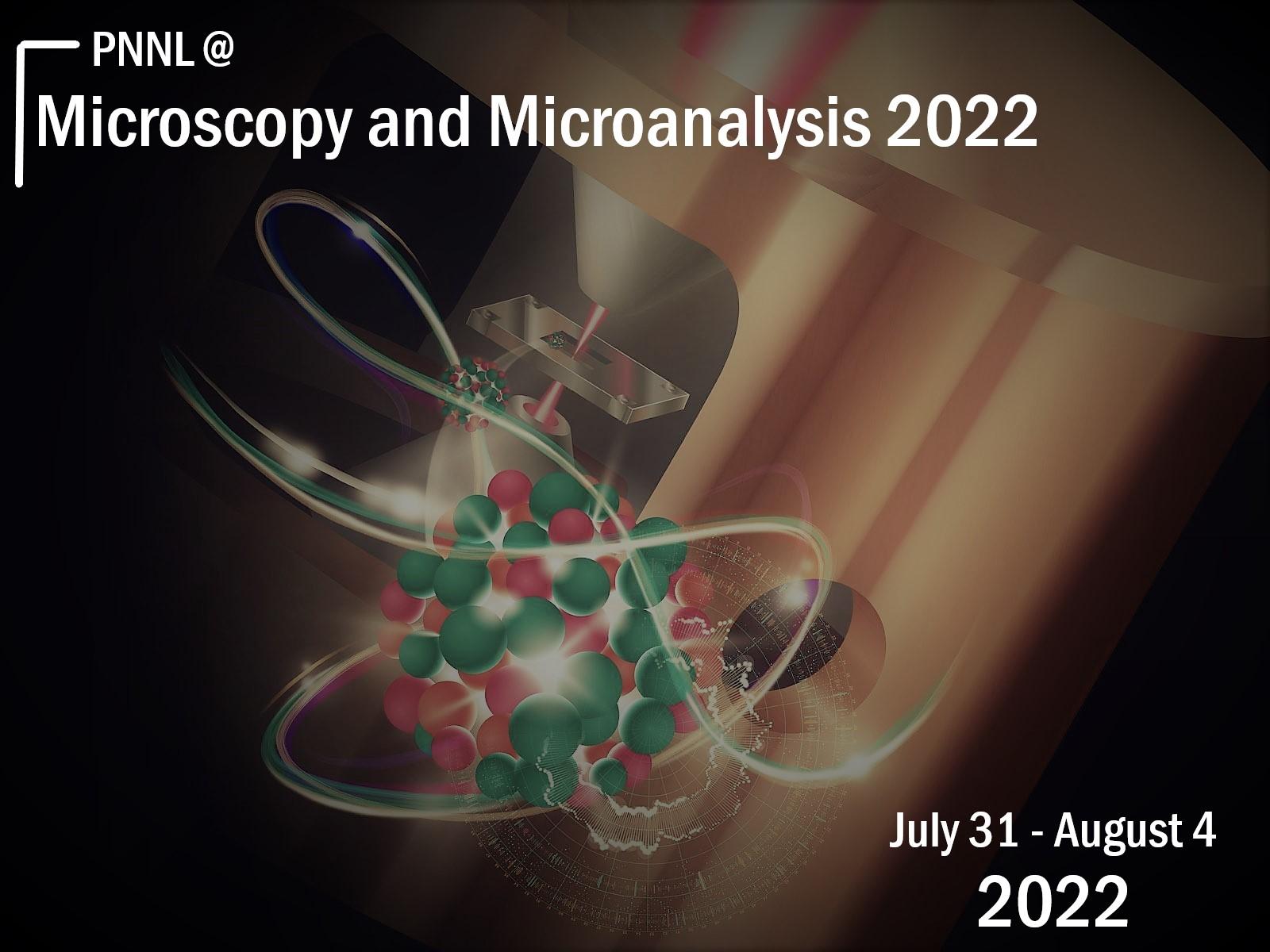
Portland, OR
Researchers from Pacific Northwest National Laboratory (PNNL) will bring their expertise to the 2022 Microscopy and Microanalysis Conference on July 31st through August 4th. PNNL is a leader in several areas of microscopy, including the integration of aberration-corrected electron microscopy, in-situ techniques, and atom probe tomography to address national challenges in nuclear materials, environmental remediation, energy storage, and national security. The newly-established Energy Sciences Center at PNNL brings together many of these capabilities under one roof.
PNNL Speakers, Presentations, and Posters
Microscopy in the Age of Automation: Accelerating Scientific Discovery via Artificial Intelligence
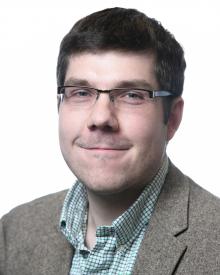
Pre-Meeting Congress: Real-World Data Analytics & Quantitative Liquid and Gas Environmental Electron Microscopy
Session PMC X62 | July 31 | 2:40-3:10 P.M. PT
PNNL Presenter: Steven Spurgeon
Artificial intelligence (AI) promises to reshape scientific inquiry and enable breakthrough discoveries in areas such as energy storage, quantum computing, and biomedicine. While many domains have embraced AI, specifically in the form of automation and machine learning (ML), its adoption for electron microscopy of non-biological systems has been slower. Mastery of evolving materials and chemical processes, such as defect formation and phase transitions, depends on the ability to acquire and interpret varied, multimodal, and fast-evolving data streams, a task uniquely suited to AI and ML.
There is currently a transformative opportunity for new science designed around sparse data analytics, edge computing-enabled automation, and forecasting models. Here I will describe our efforts to develop a framework for data-driven discovery in the electron microscope. I will discuss three topics: (1) emerging sparse data analytics for microstructural classification in real-world scenarios, (2) edge computing-accelerated instrument controllers for self-driving experimentation, and (3) forecasting models for predicting the evolution of in situ data.
Doing More with Less: Artificial Intelligence Guided Analytics for Electron Microscopy

Session C04.1 | August 1 | 2:45-3:00 P.M. PT
PNNL Presenter: Sarah Akers
Additional PNNL Authors: Marjolein Oostrom, Christina Doty, Matthew Olszta, Derek Hopkins, Steven Spurgeon
Scanning transmission electron microscopy (STEM) is an important tool in the study of microstructures and ultimately a wide range of material and chemical systems. Quantitatively describing these microstructures with advanced artificial intelligence (AI) techniques has recently become an emerging and impactful area of research in the materials domain [1]. Sophisticated new models and algorithms are being developed to automate the task of image characterization, bypassing the need for expensive manual analysis and enabling the discovery of new and unexpected features within an image. However, typical AI workflows use large libraries of labeled data to train specialized networks toward specific tasks, e.g., segmentation of a specific material class. One serious challenge for AI in this area is the lack of high-quality, well curated training data. Additionally, the need to instantly adapt to changing imaging conditions, length scales, detectors, aberrations, and materials systems is a top priority for materials characterization and a challenge for specialized AI. Here, we explore the topic of few-shot or low-shot learning (FSL) techniques in the context of creating adaptable AI designed for flexibility in both analytics and data acquisition.
Comparing structural and functional changes of biomolecules under electron irradiation with liquid cell transmission electron microscopy
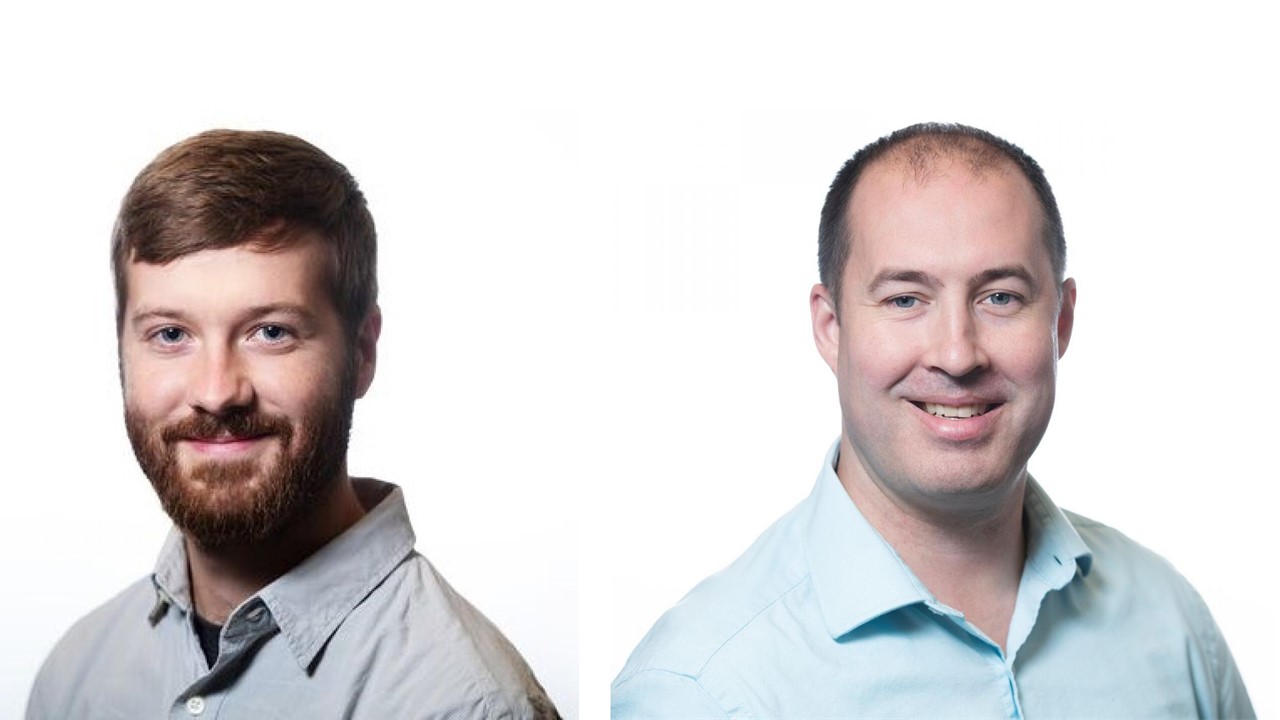
Session P08.2 | August 2 | 9:45-10:00 A.M. PT
PNNL Presenter: Trevor Moser
Additional PNNL Authors: James Evans
Characterization of interactions between electron probe and liquid sample is a critical component in realizing liquid cell transmission electron microscopy (LC-TEM) as a technique for probing biological dynamics and structures at high resolutions in native hydrated environments. Here we investigate dose effects on protein structure in LC-TEM by creating liquid cells which are amenable to both LC-TEM and cryo-EM, so that structures can be solved for equivalent samples at cryogenic temperatures and room temperature under the same imaging conditions on the same instrument. This combination finally allows direct comparison of the approaches where the only variable is physical media state (liquid versus vitrified ice). We offer possible explanations for the variations in structural resolution achieved including temporal as well as damage-based artifacts.
Dynamic observation of electro-assisted Fe oxidation by Operando Atom Probe

Session A06.2 | August 2 | 1:30-2:00 p.M. PT
PNNL Presenter: Sten Lambeets
Additional PNNL Authors: Mark Wirth, Janet Teng, Graham Orren, Daniel Perea
Heterogeneous catalysis is of the pillar of chemical industry, playing a key role in the optimization of chemical processes and their conversion towards “green chemistry”. Physics governing the surface chemical reactions involved in heterogeneous catalysis depends on the synergistic interactions existing between reactants and specific surface structures composing the catalyst. The design of high-performance catalysts requires a deep understanding of those mechanisms at the nanoscale; and surface science techniques are continuously pushing their technical limitations to bridge gaps between fundamental research and real-world applications.
The Observation of H Isotope in Fe-Cr-Ni Model Stainless Steels at the Nano Scale using Atom Probe Tomography

Session P01.4 | August 2 | 2:30-2:45 p.M. PT
PNNL Presenter: Dallin Barton
Additional PNNL Authors: Daniel Perea, Mark Wirth, Arun Devaraj
Stainless Steels (SS) are ubiquitous in consumer, industrial, and laboratory applications due to the combination of relatively high toughness, low cost, and especially corrosion resistance in many common aqueous environments. SS’s, however, when subjected to hydrogen embrittlement (HE), can suffer a reduction of ductility that can be detrimental. Under sufficient embrittlement through hydrogen-electrochemical reactions, ductility in SS decreases by over 50%. Understanding the fundamental mechanisms of HE in SS can help potentially mitigate the damaging circumstance. We first report a study of background H measurement by sweeping measurement parameters of model SS alloys in APT using Pure Fe, Fe 18Cr-10Ni (wt. %) and Fe-18Cr-14Ni (wt. %).
Quantifying Defect Pathways for Disorder in La1-xSrxFeO3/SrTiO3 Thin Films

Session P07.5 | August 3 | 9:00-9:15 A.M. PT
PNNL Presenter: Bethany Matthews
Additional PNNL Authors: Kayla Yano, Sarah Akers, Michel Sassi, Sandra Taylor, Le Wang, Yingge Du, Steven Spurgeon
Determining the behavior of functional materials under irradiation is important for fundamental understanding of order-disorder phenomena as well as control of performance in extreme conditions for applications such as nuclear reactors or spacecraft. Prior studies of model oxide interfaces have found that certain interface configurations may be more robust to amorphization under irradiation. These findings raise the question of how initial defect distributions with a thin film may affect the evolution of disorder and how such populations can be tuned to guide the radiation response. Here we study the progression of disorder in oxide thin films using analytical scanning transmission electron microscopy, revealing how intrinsic defect populations guide disordering pathways.
Correlative Micro-CT and FIB-SEM Tomography for Refined Macro-scale Pore Volume Measurements in TPBAR LiAlO2 Pellets

Session P07.6 | August 3 | 2:15-2:30 P.M. PT
PNNL Presenter: Bethany Matthews
Additional PNNL Authors: Alan Albrecht, Adam Denny, Christopher Barrett, David Senor
Tritium producing burnable absorber rods (TPBAR) are used for production of the hydrogen isotope tritium (3H). These rods are formed by concentric cylindrical layers; the main tritium producing part being the LiAlO2 pellet layer in which 6Li, under neutron irradiation, is converted into 3H and 4He ions, often creating small (<1 um) pores in the process. Porosity in these materials, whether from irradiation or from the manufacturing, can significantly affect the performance of a material, so it is important to characterize the prevalence, morphology, and networking of these pores. Here we apply a correlative µCT and FIB-SEM tomography to measure pore volume in TPBAR pellets using features below those resolvable by µCT but well within the bounds of SEM resolution to obtain a refined and corrected µCT pore volume that can be scaled to the macro-scale.
Application of 4D STEM and DPC techniques to study surface reconstruction of transition aluminas
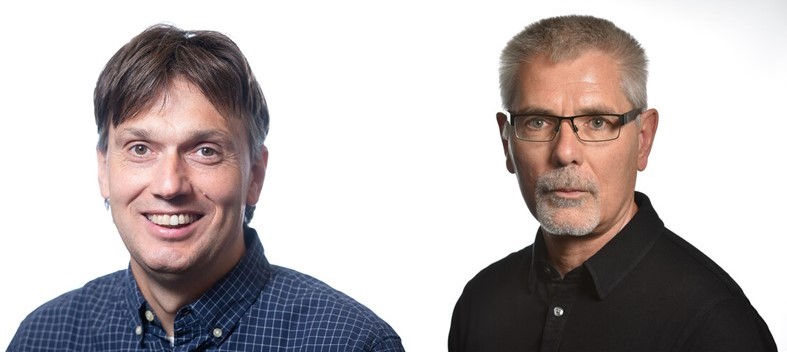
Session P10.8 | August 4 | 8:30-8:45 A.M. PT
PNNL Presenter: Libor Kovarik
Additional PNNL Authors: Konstantin Khivantsev, Janos Szanyi
Transition aluminas are used in catalytic applications as catalysts and catalytic supports due to their excellent thermal stability, ability to maintain high surface area, and most importantly their unique surface properties. Understanding the surface properties of transition aluminas has been the subject of extensive research, and while much progress has been made, the actual surface structure of transition aluminas remains only conceptually understood. A detailed nature of bonding environment has been mostly inaccessible to surface science techniques because of high degree of structural disorder, as well as inherent difficulties associated with studying high surface-area materials.
In this work, we will present results from atomic resolution STEM imaging of surface structures of transition aluminas as enabled by segmented and pixelated (EMPAD) detectors. Our observations focus on important low index surfaces, as well as irrational surfaces
Pivot Point: the Key to TEM Automation

Session C01.2 | August 4 | 9:00-9:15 A.M. PT
PNNL Presenter: Matthew Olszta
Additional PNNL Authors: Derek Hopkins, Kayla Yano, Christina Doty, Marjolein Oostrom, Sarah Akers, Steven Spurgeon
Since its inception, transmission electron microscopy (TEM) has been considered one of the most site-specific sample analysis techniques; with regions of interest on the order to nanometers to micrometers. The advent of aberration Cs probe correction has further pushed the resolution of the scanning TEM (STEM) to the picometer scale, thereby minimizing the desired field of investigation further. Combined with the addition of other factors such time-consuming sample preparation, this trend has minimized the utilization of statistical analysis in extremely high-resolution scenarios. The phrase, “n equals 1” has been a longstanding statement espoused by electron microscopists in reference to experimental replication. The development of on the fly data analysis techniques, such as few shot analysis, coupled with integrated control of microscope platforms (e.g., PyJEM) is providing advancements to overcome these statistical challenges.
Sub-micron scale chemical and mineralogical analyses on microbially induced calcium carbonate precipitates

Session B04.2 | August 4 | 2:00-2:15 P.M. PT
PNNL Presenter: Neerja Zambare
Additional PNNL Authors: Alice Dohnalkova, Tamas Varga, Anil Krishna Battu, Libor Kovarik
Microbially induced calcium carbonate precipitation, or MICP, is a process by which bacterial metabolic processes lead to the formation of calcium carbonate. Metabolic processes that can raise the pH and alkalinity of the surrounding media can facilitate MICP in the presence of calcium ions. Hydrolysis of urea (ureolysis) is one such metabolic process. MICP has numerous environmental and engineering applications, especially in porous media. Precipitates formed by MICP can be used as biological cement to alter porous media properties such as permeability, allowing for strengthening of subsurface media and sealing of leakage pathways of geologically stored carbon dioxide. MICP is also being studied as a biotechnology to reduce the spread of contaminants by trapping them in the precipitates.
Although its applications are macro-scale, MICP is heavily impacted by the micro-scale relationships between the bacteria and the formed minerals. For example, organics produced by bacteria can influence crystallinity and polymorphism in the precipitates which in turn has implications in mineral stability. To study polymorph selection and the role of organics therein, it is necessary to visualize this process and generate samples for mineralogical and organics analyses at an appropriately micro-scale. Our studies apply a correlative microscopic and microanalytical approach with a unique micro-scale system to study biologically precipitated minerals. Our chemical and mineralogical findings contribute to understanding the influence of organics on calcium carbonate (bio)mineral formation.
Elemental co-localization of nutrients, C, Al, and Fe in soil minerals with electron microscopy and scatterplot-matrix analysis

Session B04.2 | August 4 | 2:15-2:30 P.M. PT
PNNL Presenter: Odeta Qafoku
Additional PNNL Authors: Mark Wirth, William Chrisler, Galya Orr
Transformation of minerals on Earth’s surface is an important process because it supplies terrestrial ecosystems with essential nutrients that are vital for the life of soil microbes and for plant growth. In addition, mineral transformation influences organic carbon capture as well as sequestration of atmospheric carbon dioxide (CO2) in soils, with global impact towards reduction of CO2 levels in atmosphere. Understanding linkages between mineral transformation, nutrient availability, and C capture in varying ecosystems can advance our knowledge on ecosystems responses to a warming climate and can guide in developing more accurate models to mitigate climate change.
Developing a Practical Framework for Spatially Correlated Electron and X-ray High Resolution Chemical Imaging

Session B04.3 | August 4 | 4:00-4:15 P.M. PT
PNNL Presenter: Alice Dohnalkova
Additional PNNL Authors: Anil Krishna Battu, Libor Kovarik, Tamas Varga
Soil microbial communities affect the formation of micro-scale organo-mineral associations where complex processes, such as soil organic matter stabilization occur in a narrow zone of biogeochemical gradients. We designed a field study to examine these processes using in-growth mesh bags containing minerals of selected classes, with the goal to analyze the direct interactions between microbes and minerals, and to identify the nature of the newly formed organo-mineral associations [1]. Early results support the in-situ formation of organic compounds by microbes in the mesh bags and indicate less stable organic carbon pools than found in the bulk soil.
Multimodal Imaging of the Evolving Interface of the Irradiated Cladding

On-demand Platform Presentation | Session A10 | Presentation 222
PNNL Presenter: Xiao-Ying Yu
Additional PNNL Authors: Bethany Matthews, Shawn Riechers, Steven Spurgeon, Zihua Zhu, Gary Sevigny, Walter Luscher
We will present recently peer-reviewed results to showcase the advanced multimodal imaging capabilities developed to study irradiated materials at the Pacific Northwest National Laboratory. Irradiated cladding samples selected to support the tritium science and technology program will be used as an example to demonstrate the multimodal imaging capabilities.
Capturing the Evolution of the Oil-in-Water Emulsion Interface by Correlative Imaging
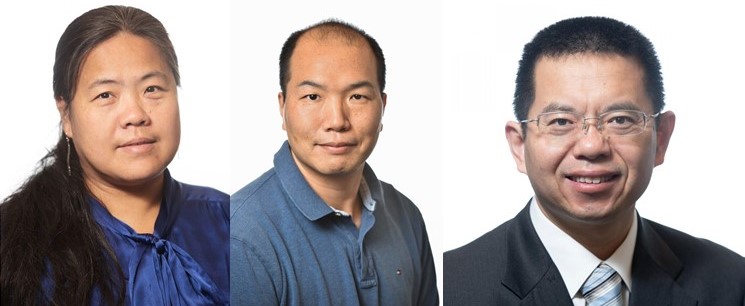
On-demand Platform Presentation | Session B04 | Presentation 298
PNNL Presenter: Xiao-Ying Yu
Additional PNNL Authors: Jiyoung Son, Zihua Zhu
Bilgewater formed from the shipboard is regarded as a major pollutant in the marine environment. Bilgewater exists in a stable oil-in-water (O/W) emulsion form. However, little is known about the O/W liquid-liquid (l-l) interface. Traditional bulk characterization approach is not capable of capturing the chemical changes at the O/W l-l interface. Although surfactants are deemed essential in droplet formation, their roles in bilgewater stabilization are not fully revealed. We have employed novel in situ chemical imaging tools including in situ scanning electron microscopy (SEM) and in situ time-of-flight secondary ion mass spectrometry (ToF-SIMS) to study the evolving O/W interface using a NAVY bilge model for the first time. Our observational insights suggest surfactants are important in mediating droplet growth and facilitating effective separation of bilgewater emulsion.
Extracting Microstructural Descriptors via Unsupervised and Few-Shot Machine Learning

Late-Breaking Poster Session
PNNL Presenter: Christina Doty
Additional PNNL Authors: Marjolein Oostrom, Sarah Akers, Steven Spurgeon
Scanning transmission electron microscopy (STEM) is a cornerstone of the characterization of microstructures, but features in STEM data are often diverse, artifacted, and poorly described by past libraries. The application of emerging machine learning (ML) techniques to the analysis of STEM images can potentially help researchers discover new features and structures without needing to rely on time-intensive manual analysis. However, many ML models are highly specialized and must be trained on large sets of hand-labeled image data. Generalizing these models and allowing them to adapt to different material systems and conditions without extensive labeled data can be challenging. Few-shot ML presents a solution, as it requires less initial training data, and can easily be applied to different characterization scenarios. Small regions within a single STEM image can be identified as features of interest and used to train the few-shot model to predict on the rest of the image. Here we describe a graphical user interface (GUI)-based application designed to guide microscopists through the training and application of our few-shot ML model.
Analysis of a Thin Oxidation Layer with Principal Component Analysis on Oxidized Uranium Silicide

Late-Breaking Poster Session
PNNL Presenter: Shalini Tripathi
Additional PNNL Authors: Edgar Buck, Bruce McNamara, Zachary Huber
There is interest in exploring new nuclear fuel concepts that might be used with non-zirconium-based cladding. Uranium silicide-based fuels, such as U3Si2, are leading candidates as they exhibit better thermal conductivity than UO2 fuels. Furthermore, these materials can have higher heavy metal densities which improves reactor efficiency. However, an important concern is accident tolerance and hence the interaction of the fuel with water at high temperatures needs to be understood. Additionally, processing steps required to make silicide fuels often require elevated temperatures that have the potential to oxidize the uranium fuel. Previous work has demonstrated that U3Si2 oxidizes to U3O8 at temperatures above 400°C. In this investigation, experiments were conducted at lower temperatures where this transition would not be expected to occur. This paper describes the characterization of the surface oxidation on a pristine sample using a combination of scanning electron microscopy (SEM) and scanning transmission electron microscopy (TEM). The pristine specimen had only been exposed to room temperature conditions.
Introducing shear deformation at a micron-scale using in-situ nanomechanical testing inside the plasma focused ion beam

Late-Breaking Poster Session
PNNL Presenter: Tanvi Anil Ajantiwalay
Additional PNNL Authors: Mayur Pole, Lei Li, Tingkun Liu, Julian Escobar Atehortua, Arun Devaraj, Bharat Gwalani
Plasma focused ion beam (PFIB) has the potential to fabricate large damage-free specimens for various analytical applications. The use of heavier xenon (Xe) ions instead of conventional gallium (Ga) ions provide faster-milling rates and no ion-implantation. In this study we utilized the PFIB for preparing site-specific specimens for micromechanical testing to study the shear deformation behavior. For introducing shear deformation in the material at a micron-scale, we fabricated a modified S-shaped micro-pillar in five different materials: pure-Cu, pure-Al, Cu/Nb nanolaminates, Fe-9Mn and Co-Fe-Ni medium entropy alloy using the PFIB. The mechanical testing is then performed in-situ using the Bruker PI89 Picoindenter inside the dual beam PFIB/SEM. The stress vs. strain curves shows the difference between the shear stresses for materials having different elastic and shear moduli. The scanning electron micrographs reveal a propagation of a shear band during deformation via simple shear mode.
PNNL Organized Sessions
X60— Annual Pre-Meeting Congress for Students, Post-Docs, and Early-Career Professionals in Microscopy and Microanalysis

PNNL Organizer: Neerja Zambare
This pre-meeting congress is organized by and for students, postdocs, and early-career professionals, and provides:
- Research presentations from faculty in both biological and physical sciences
- A forum for students, postdocs and early-career professionals to deliver presentations to peers ahead of the meeting
- Opportunities to share your research in an engaging, non-intimidating, and interactive setting to practice ahead of the main meeting and win awards
- Expanded professional networking and career development mentoring
A02 - Beyond Visualization with in situ and Operando TEM
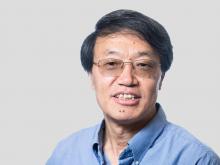
PNNL Organizer: Chongmin Wang
As in situ liquid and gas TEM imaging techniques become more mature, researchers are beginning to consider how to push their boundaries for quantitative understanding of material dynamics and transformations. As in situ TEM data becomes increasingly multidimensional (in real and reciprocal space) and synchronous (in situ images with real-time readout of temperature, pressure/flow, product signal, etc.), there is significant interest in extracting and even real-time tracking of quantitative information from these exceptionally rich data sets. This symposium invites papers from across the sub-fields of in situ TEM, including applications such as electrochemical systems, catalysis, 2D materials, and soft materials, focused on identifying, extracting, and measuring dynamic structural descriptors and their outcomes to advance our understanding of materials dynamics.
A10 - Surface and Subsurface Microscopy and Microanalysis of Physical and Biological Specimens

PNNL Organizer: Xiao-Ying Yu
Surface properties dictate the performance of many physical and biological systems. The surface analyst is asked to detect and image species present in ever-lower concentrations and within ever-smaller spatial and depth dimensions. This symposium emphasizes state-of-the-art surface analytical instrumentation encompassing all aspects of surface and near-surface analyses, such as mass spectrometry, scanning probe microscopy and other probe-based techniques.
B04 - Correlative and Multimodal Microscopy and Analysis

PNNL Organizer: Xiao-Ying Yu
Real-world systems are hierarchical, encompassing large differences in size, structure, composition, and arrangement. Correlative microscopy and analysis have evolved to an essential toolkit to characterize these complex systems and have led to advances in both soft and hard material studies by providing information with complimentary modalities and across different scales. In this symposium, we highlight technical innovations in instrument development, sample preparation and handling, in-situ and cryogenic sample environment, and data analysis pipeline.
P01 - Emerging Methods for Characterizing Hydrogen Effects in Metals and Alloys

PNNL Organizer: Arun Devaraj
The presence of hydrogen in metals can lead to catastrophic failures known as hydrogen embrittlement. A solution for this problem requires a multiscale understanding of microstructural hydrogen behaviors for which atom probe tomography, nanoscale secondary mass ion spectroscopy, neutron tomography and other methods have proven to be powerful. Combined with structural information provided by both in-situ and ex-situ electron microscopy, these techniques have improved the understanding of how hydrogen causes hydrogen embrittlement and how to prevent it. This symposium aims to bring together worldwide researchers focused on such emerging methods for characterizing hydrogen effects in metals and alloys.
P05 - In Situ TEM Characterization of Dynamic Processes during Materials Synthesis and Processing

PNNL Organizer: Dongsheng Li
In situ transmission electron microscopy (TEM) techniques have emerged as primary tools for characterizing the dynamics of materials formation. The development of in situ TEM capabilities has led to rapid advances in our understanding of a range of dynamic processes, including nucleation, growth, and assembly in colloidal, electrochemical, organic, semiconductor, and other systems. The symposium covers a broad range of topics including particle nucleation, crystal growth, phase transformations, polymeric and organic/inorganic self-assembly, electrochemical processes, and interface dynamics in gases and liquids. This symposium aims to provide a platform of discussion to understand the physics and chemistry of materials formation for researchers from various fields.
C01 - Microscopy Infrastructures: Architectures, Avenues and Access

PNNL Organizer: Steven Spurgeon
Modern microscopy drives new scientific discovery, and new scientific practice is driving innovations in microscopy. Hardware and software developments are reshaping how instruments are priced, purchased, designed, and operated. Today’s dynamic research landscape requires us to shift from traditional, closed operating models toward open, agile characterization platforms designed to shorten time to solutions. The field also increasingly demands better value for funders; asynchronous, remote access models; and emphasis on infrastructure resilience. We will explore emerging reprogrammable instrument architectures, new modes of automated/remote operation, and host critical dialogue on the growing cost-driven divide between technological, haves, and, have-nots, among other topics.